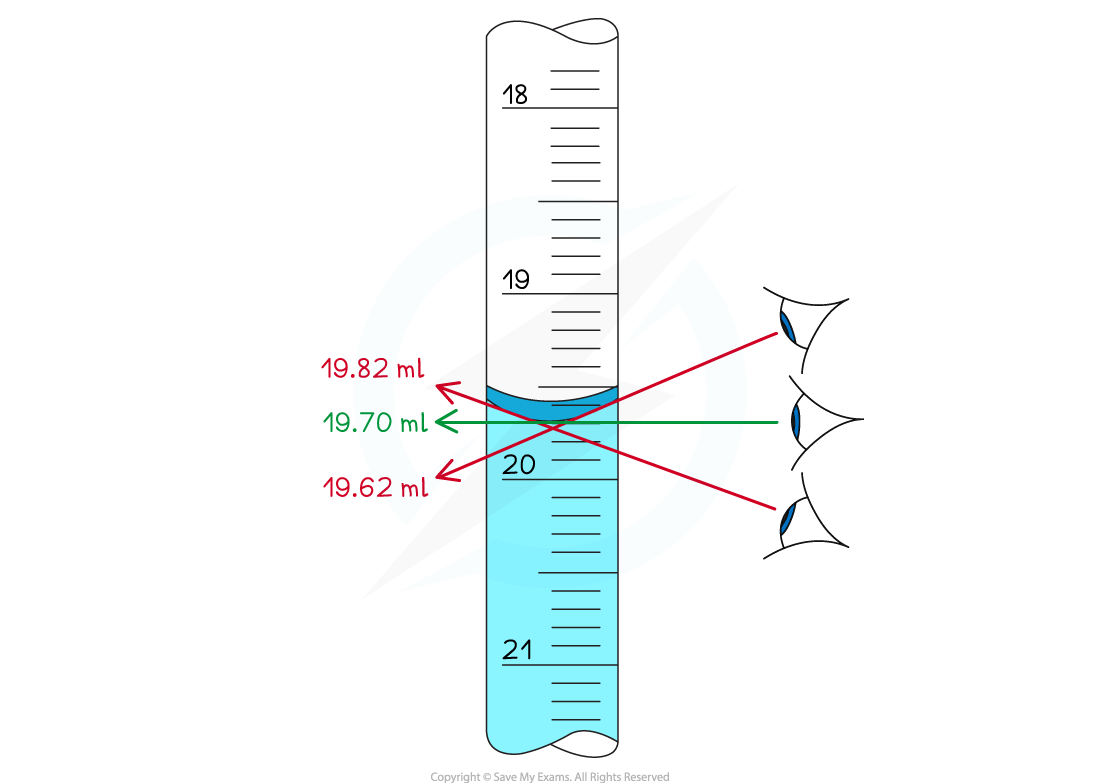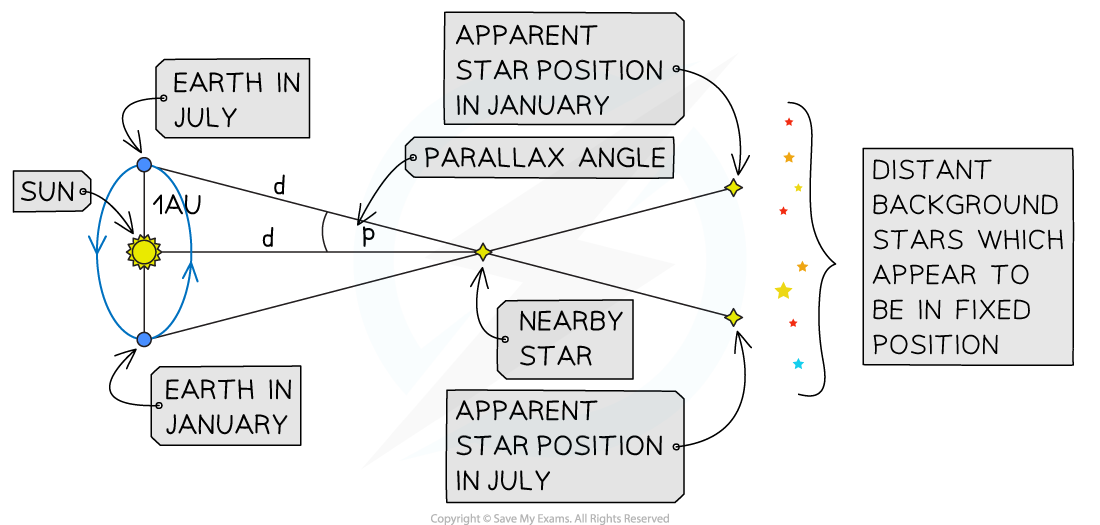Stellar Parallax (OCR A Level Physics): Revision Note
Exam code: H556
Stellar Parallax
The principle of parallax is based on how the position of an object appears to change depending on where it is observed from
When observing the volume of liquid in a measuring cylinder the parallax principle will result in the observer obtaining different values based on where they viewed the bottom of the meniscus from

Stellar parallax can be used to measure the distance to nearby stars
Stellar Parallax is defined as:
The apparent shifting in position of a nearby star against a background of distant stars when viewed from different positions of the Earth, during the Earth’s orbit about the Sun
It involves observing how the position of a nearby star changes over a period of time against a fixed background of distant stars
To an observer the position of distant stars does not change with time
If a nearby star is viewed from the Earth in January and again in July, when the Earth is at a different position in its orbit around the Sun, the star will appear in different positions against a backdrop of distant stars which will appear to not have moved
This apparent movement of the nearby star is called the stellar parallax

The Parallax Equation
Applying trigonometry to the parallax equation:
1 AU = radius of Earths orbit around the sun
p = parallax angle from earth to the nearby star
d = distance to the nearby star
So, tan(p) =
For small angles, expressed in radians, tan(p) ≈ p, therefore: p =
If the distance to the nearby star is to be measured in parsec, then it can be shown that the relationship between the distance to a star from Earth and the angle of stellar parallax is given by
Where:
p = parallax (")
d = the distance to the nearby star (pc)
This equation is accurate for distances of up to 100 pc
For distances larger than 100 pc the angles involved are so small they are hard to measure accurately

Worked Example
The nearest star to Earth, Proxima Centauri, has a parallax of 0.768 seconds of arc.
Calculate the distance of Proxima Centauri from Earth
a) In parsec
b) In light–years
Answer:
Part (a)
Step 1: List the known quantities
Parallax, p = 0.768"
Step 2: State the parallax equation
Step 3: Rearrange and calculate the distance d
Part (b)
Step 1: State the conversion between parsecs and metres
From the data booklet:
1 parsec ≈ 3.1 × 1016 m
Step 2: Convert 1.30 pc to m
1.30 pc = 1.30 × (3.1 × 1016) = 4.03 × 1016 m
Step 3: State the conversion between light–years and metres
From the data booklet
1 light–year ≈ 9.5 × 1015 m
Step 4: Convert 4.03 × 1016 m into light–years
= 4.2 ly (to 2 s.f)
Examiner Tips and Tricks
Make sure you know the units for arc seconds (") and arc minutes (')
1 arcminute is denoted by 1'
1 arcsecond is denoted by 1"

Unlock more, it's free!
Did this page help you?